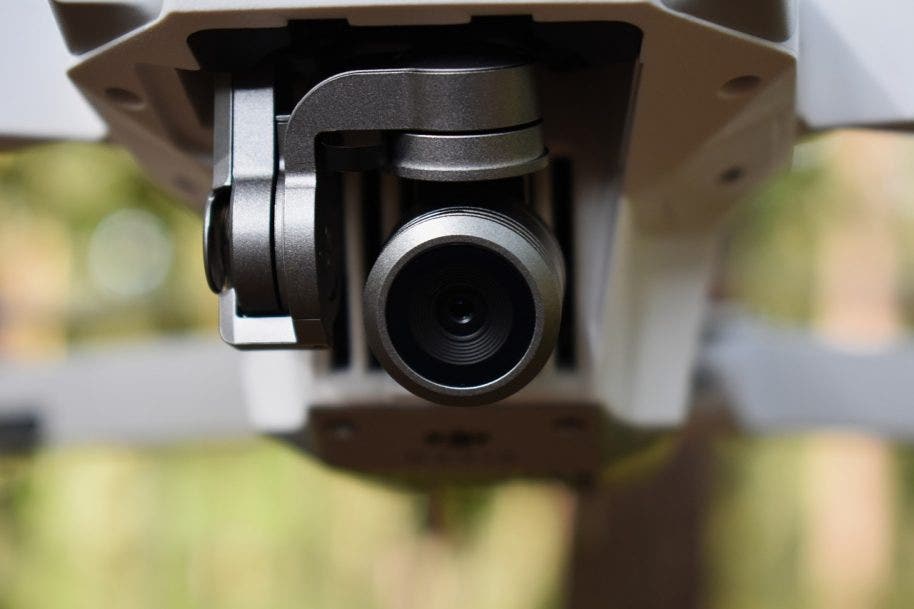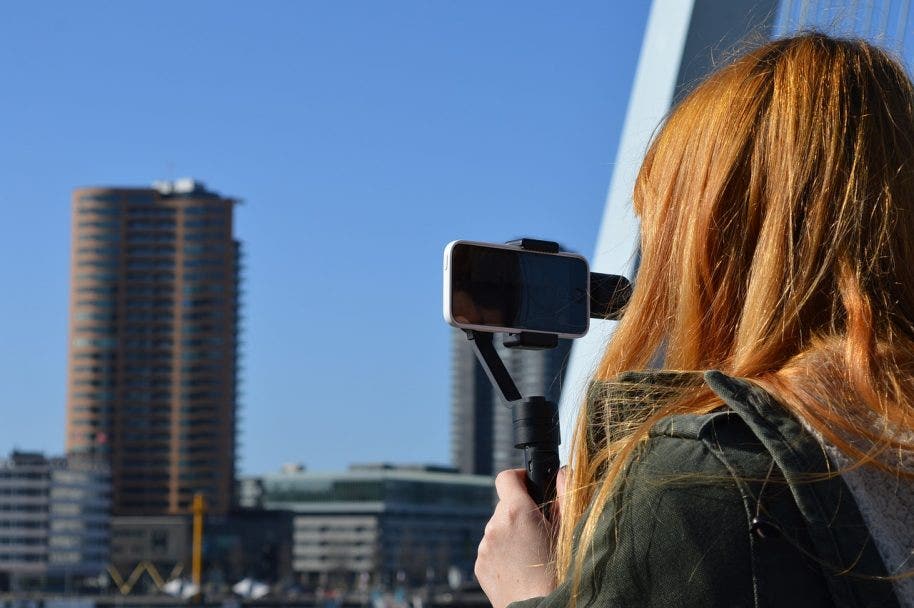
Along with drones, gimbals have revolutionised videography by enabling smooth filming, regardless of the movements of the videographer.
Gimbals act like a support system in the way dollies, Steadicams, and tripods do but they offer greater freedom of movement.
If you’re thinking of upping your vlogging game or improving your videos, a gimbal might be an essential piece of equipment.
What is a gimbal stabiliser used for?

A gimbal is a pivoted support device that stabilises your videos and photos. Gimbals absorb vibrations from your camera and allow smooth filming or crisp stills whether you’re shaky, on a bumpy road, or moving quickly.
Gimbals are available in a range of sizes and types tailored not just to the camera you’re using but to the style of photography or videography you’re shooting.
You can get gimbals for your smartphone, your GoPro, your compact camera, or your heavy-duty DSLR.
There are typically two specific types of gimbals. Motorised gimbals are made to shoot video, with three axes working hard to keep your handheld footage fluid and cinematic.
Tripod head gimbals are usually made for photographers shooting with long telephoto lenses. These gimbals don’t use motors but instead keep your camera steady by balancing it on its own centre of gravity.
How do gimbals work?
Most gimbals have three different, independently motorised axes. Each axis controls a different movement:
- Tilting - used to make the object of your video move up and down smoothly.
- Panning - used to make video panning left and right smooth.
- Roll - used to record objects moving back and forth.
The gimbal contains a sensor that records and measures sudden jolts and movements, while a processor sends this information to the right motor to counteract the motion. This correction occurs in milliseconds.
How to use your gimbal
Before you start using your gimbal, you need to balance your camera on the gimbal’s three axis. This is to make sure your camera stays in any position you move it into, rather than it rotating back to another position.
Balancing your gimbal will reduce the demands on the motors and ensure your gimbal does its job effectively.
Many gimbals need to be hung from a stand to help balance the camera, while others only need to be placed on a tabletop or sturdy surface.
Once your gimbal is balanced, you can start using it to pan, tilt, or rotate your camera smoothly. Most gimbals need to be held with two hands, although many now also feature a one-handed mode.
It’s important to remember that a gimbal can’t correct up-and-down movement when you walk.
The best way to minimise that movement is to shoot your gimbal from the chest, keep it close to you, walk lightly on the balls of your feet, bend your knees, and lock in your elbows and wrists.
Are gimbals worth it?

That’s for you to decide, but gimbals come with many benefits that might make you decide to take the plunge.
For a start, gimbals give you the flexibility to take your camera almost anywhere with you and still get a smooth shot.
The fact that they come equipped to deal with a range of motions means that they help you film a shot in less time since you don’t have to set up extra gear for the same effect.
Ready to buy your first gimbal?
OK, so you’ve decided it’s time to take your videography to the next level. How do you know which gimbal to buy?
The ideal gimbal will all depend on the camera and lenses you already own. You need to get a gimbal that works with your heaviest camera, your widest lens, and any other equipment you’re likely to have on it.
Are you ready to get your first gimbal? Shop our range of gimbals and other camera stabilisers online at Camera House.
